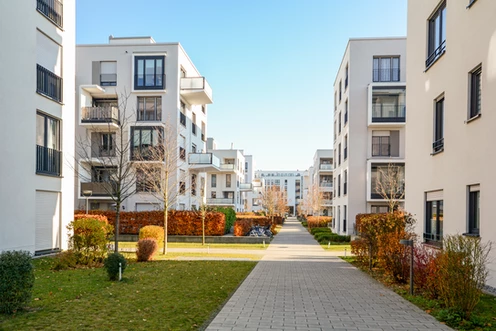Constructing the Perfect Defense
- Unfortunately, disputes in construction are inevitable. And litigation often follows.
- But by implementing some proactive strategies, construction companies can try to minimize the pain.
- A good lawyer can help you navigate this treacherous landscape and avoid any catastrophic pitralls.
I have mentioned this before, but our businesses can sometimes be offset and cyclical. In times like we are in now, where there are fewer deals closing in the market and times are rougher in the real estate world, there seems to be a lot of litigation. And while that can be good for our litigation section, I certainly recognize its not good for our clients. Litigation is generally not fun.
But it does happen. And one area it happens a lot is construction. In construction, disputes are an inevitable reality. Construction companies often find themselves at the center of these disputes, facing a myriad of legal complexities. Understanding the legal landscape and effectively navigating potential litigation is essential for construction companies to protect their interests and safeguard their business. So let’s talk about it.
Common Legal Issues in Construction Disputes
Construction disputes encompass a broad spectrum of legal issues, arising from disagreements over contractual obligations, defective workmanship, delays, cost overruns, and project performance. Some of the most common legal issues faced by construction companies in litigation include:
- Breach of Contract: Claims for breach of contract are prevalent in construction disputes, alleging that one party has failed to fulfill their contractual obligations. These claims can center on issues such as non-performance, defective work, and failure to meet deadlines.
- Negligence: Negligence claims arise when a construction company’s actions or omissions result in damages or injuries. Allegations of negligence can stem from faulty design, improper construction techniques, or inadequate safety measures.
- Mechanic’s Liens: Mechanic’s liens are legal claims filed by unpaid subcontractors, suppliers, or laborers to secure payment for their work or materials. Construction companies may find themselves involved in mechanic’s lien disputes, particularly when the owner fails to pay contractors.
- Delay Damages: Delay damages are sought when a construction project is not completed on time, causing financial losses to the owner or other parties. Construction companies may face claims for delay damages if they are deemed responsible for project delays.
- Defective Workmanship: Claims for defective workmanship arise when the completed construction work fails to meet the agreed-upon standards or specifications, causing damage or impairing the property’s use. Construction companies may be held liable for defective workmanship if they failed to adequately supervise or inspect the work.
Legal Strategies for Construction Companies
To effectively navigate construction disputes and minimize legal risks, construction companies should adopt proactive strategies. As they say, an ounce of prevention is worth a pound of cure. And by preparing beforehand, the pain of litigation can be reduced. Thus, its important to:
- Review Contracts Thoroughly – Carefully review and negotiate contracts to clearly define project scope, responsibilities, timelines, and payment terms. Ensure that contracts include adequate protections against potential disputes.
- Have a Risk Management Plan – Implement a comprehensive risk management plan to identify, assess, and mitigate potential risks throughout the construction process. This includes maintaining detailed project documentation, conducting regular inspections, and addressing issues promptly.
- Have Open Dialogue – Maintain open and transparent communication with all parties involved in the project, including owners, contractors, subcontractors, and design professionals. Promptly address any concerns or disagreements to prevent escalation into disputes.
- Resolve Disputes Early – When disputes arise, seek early and amicable resolution through negotiation, mediation, or arbitration. These methods can be more cost-effective and time-efficient than traditional litigation.
- Engaging Legal Counsel – Obviously this is the most important step. Consult with experienced construction law attorneys early in the dispute resolution process to gain legal guidance, protect your interests, and ensure compliance with legal procedures.
Conclusion
Construction disputes can be complex and costly, posing significant challenges for construction companies. By understanding the common legal issues, implementing proactive strategies, and seeking legal counsel when necessary, construction companies can effectively navigate the legal maze and protect their business from unnecessary risks and liabilities.

